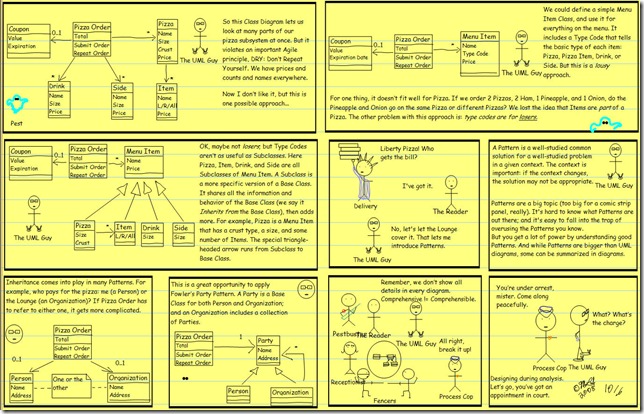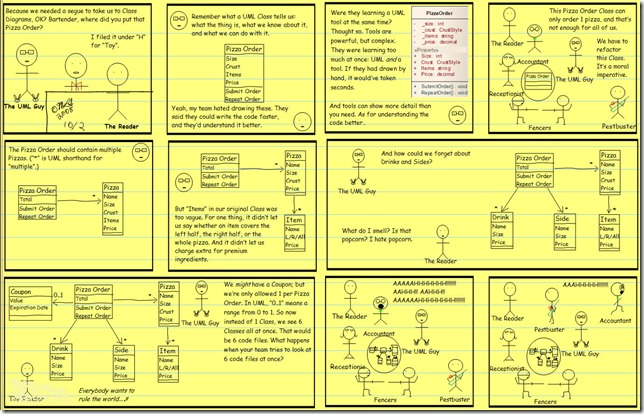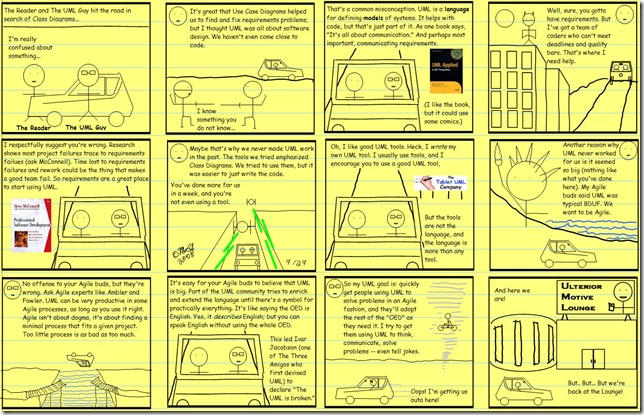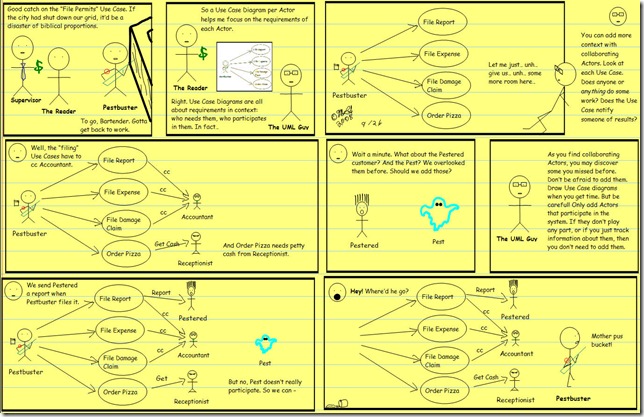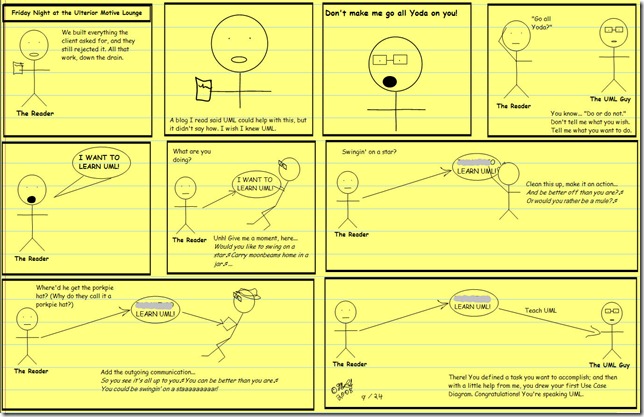In our last episode, The Reader and The UML Guy explored how adding collaborating Actors to a Use Case Diagram gives the audience more context and thus better understanding of the requirements. In the process, unfortunately, Pest escaped. Pestbuster has abandoned his diagram to recapture Pest.
(Click for a larger image.)
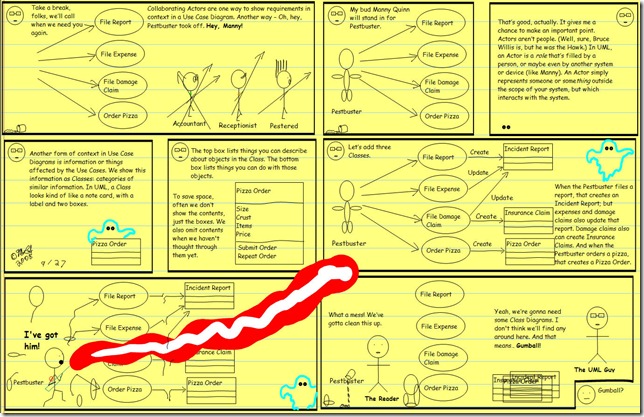
And now I’d like to address four related questions. Editor Bill asked me why, in Episode 1, I chose to use an obscure in-joke from a mostly forgotten film — and worse, a film that was mostly hated by those who do remember it. (The masses just don’t appreciate its brilliance…) And Bill, a gamer and Foglio fan, also asked for an explanation of growlf, telling me that that reference was pretty obscure, too.
And jbkazoo asked why the porkpie hat was gone in Episode 2, and where was Samuel L. Jackson? (I suspect he was thinking of the wrong Bruce Willis film…)
So after these questions, why did I drop another reference to Bruce Willis’s underappreciated masterpiece? Even more bizarre, why did I drop a reference to an obscure 1976 film that no one outside my family has ever admitted to seeing?
Simple answer: it amuses me.
This strip is hard work for me, but it’s also fun. If it ever stops being fun, then it’ll only be work. Hard, unpaid work. If it gets to be a chore, well, I have plenty of other claims on my time. So inserting obscure jokes and references helps me to keep producing it. Think of me as the Dennis Miller of UML (though not as funny, nor as erudite).
Editor Bill gently suggested that if I let the references get too obscure, I could lose my audience. (Bill must not be a Dennis Miller fan.) And while I appreciate The Reader, each and every one of you (and hope some of you some day will have comments and maybe even questions I can answer), my answer has to be: I don’t care. Many successful bloggers will tell you the advice I first heard from Dean Esmay: if you blog, blog what interests you. Don’t try to change who you are to please an audience, because you’ll lose authenticity, and lose your audience in the process. Blog for yourself; and if you’re passionate about it, you’re more likely to find and hold an audience.
Now these strips are a little different from the usual blog. I have a not-exactly-subtle goal of teaching UML here; and I can’t achieve that goal without The Reader. If I find no one’s reading over time, well, I already know UML. As fun as they can be, the strips don’t teach me much. So I can’t completely ignore the impact of my obscure jokes on the audience. But I gotta be me. As long as it’s me drawing and writing the strip, the obscure jokes will happen. It’s not like I have control over them.
Returning to jbkazoo’s second question: where’s Samuel L. Jackson? Well, I know it’s a shock, but I haven’t seen that film. I can only reference films that amuse me, which means films I know. Roughly speaking, that means 80s films (though two of three films referenced so far are from 1976 and 1991). Without me planning it, exactly, my favorite films have become an integral part of this strip, driving it almost as much as the UML. Since the 80s were a big movie-watching decade for me, that’s where most of the films will come from; and since some of my favorite films are a little off beat, some might say these aren’t just 80s films, they’re bad 80s films.
So I guess if you need a five-word description of this strip, it’s “UML and Bad 80s Films”. And that amuses me.
UPDATE: Unknown to me, it turns out Manny Quinn is an unintentional reference. Disney was there first, as Lynn the Build Queen pointed out. (And don’t worry, Manny’s not hurt. He’ll be back.)



